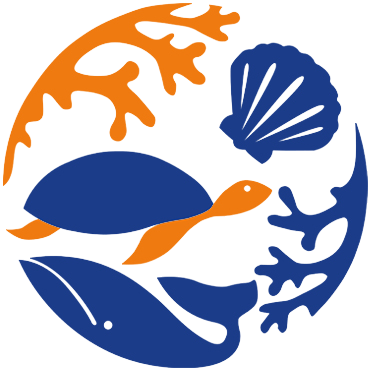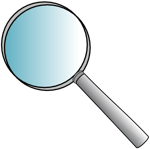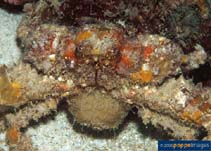Daldorfia horrida (Linnaeus, 1758)
Horrid elbow crab| Native range | All suitable habitat | Point map | Year 2050 |

|
| This map was computer-generated and has not yet been reviewed. |
| Daldorfia horrida AquaMaps Data sources: GBIF OBIS |
Classification / Names आम नाम | उपशब्द | CoL | ITIS | WoRMS
Malacostraca | Decapoda | Parthenopidae
Environment: milieu / climate zone / गहराई सीमा / distribution range पारिस्थितिकी
प्रवाल-भित्ति संयुक्त; गहराई सीमा 0 - 125 m (संदर्भ 105618). Tropical; 32°N - 31°S, 30°E - 108°W
Distribution देश | ऐफ ऐ ओ क्षेत्र | Ecosystems | संयोग | भूमिका
Indo-Pacific. Tropical and subtropical.
Length at first maturity / आकार / Weight / Age
परिपक्व अवधि: Lm ? range ? - ? cm Max length : 14.0 cm CL पुल्लिंग / अलिंग; (संदर्भ 128968)
Life cycle and mating behavior परिपक्व अवधि | पुनरुत्पत्ति | मछलीऔ का अंडे देना | Eggs | Fecundity | Larvae
Main reference
संदर्भ | संयोजक | सहयोगीयो
Poupin, J. 2050 Database of Crustacea (Decapoda and Stomatopoda), from Central Pacific Islands (French Polynesia, Pitcairn, Easter Island, Clipperton). Http://decapoda.ecole-navale.fr/index.php and http://decapoda.free.fr. [Accessed 160207]. (संदर्भ 2891)
IUCN Red List Status
(संदर्भ 130435: Version 2025-1)
CITES status (संदर्भ 108899)
CMS (संदर्भ 116361)
Threat to humans
Human uses
मात्स्यिकी: व्यापारिक
| FishSource | Sea Around Us
साधन
अधिक जानकारी
इंटरनेट स्रोत
BHL | BOLD Systems | CISTI | DiscoverLife | FAO(Publication : search) | Fishipedia | GenBank (genome, nucleotide) | GloBI | Gomexsi | Google Books | Google Scholar | Google | PubMed | Tree of Life | Wikipedia (Go, खोज) | Zoological Record



